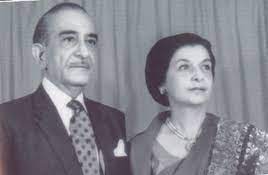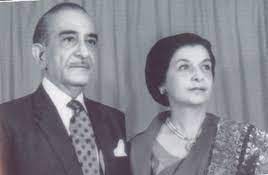Humble tributes to Dr Babasaheb Ambedkar, the first politician to identify the burgeoning population of the country as the root-cause of several social and economic evils and take up the issue of family planning and birth control. This came at a time when many were advocating 'self-control' as a panacea to this problem.
Read on:
#JaiBhim #DrBabasahebAmbedkar #Ambedkar #BabasahebAmbedkar #BRAmbedkar #DrAmbedkar #familyplanning #birthcontrol

Read on:
#JaiBhim #DrBabasahebAmbedkar #Ambedkar #BabasahebAmbedkar #BRAmbedkar #DrAmbedkar #familyplanning #birthcontrol

The Government of India Act, 1935, had established legislatures comprising of elected members in 11 provinces. During the 1937 elections to the Bombay provincial assembly, Dr Ambedkar had announced that were he to come to power, he would make birth control mandatory in the Bombay Province. He outlined this in the manifesto of his Independent Labour Party (ILP).
P. J. ‘Dadasaheb’ Roham of Ambedkar’s ILP spoke in the assembly on 10 November 1938. Roham stated that the speech was based on the points drawn by Dr Ambedkar for his own speech and that Dr Ambedkar was the father of this speech. Ambedkar was unable to attend the house on that day and later complimented Roham for almost reproducing the speech which, he wanted to deliver in the assembly.
Roham, who hailed from Ahmednagar district in north Maharashtra, made a strong case for birth control as a means of progress and poverty alleviation.
“Many women become invalid for life and some even lose their lives by the birth of children in their diseased condition or in too great numbers or in too rapid succession. Attempts at abortion, resorted to for the prevention of unwanted progeny, exact a heavy toll of female lives. Unwanted children are often neglected by their mothers and hence they become nothing but a burden to society which is further deteriorated by the addition of defective progeny from diseased persons. Birth-control is the only sovereign specific that can do away with all these calamities. Whenever a woman is disinclined to bear a child for any reason whatsoever, she must be in a position to prevent conception and bringing forth progeny which should be entirely dependent on the choice of women. Society would in no way profit by the addition of unwanted progeny. Only those children who are welcomed by their parents, can be of social benefit and hence every woman must be enabled to resort to prevention of conception quite easily,” said Roham in his speech delivered in Marathi.
Roham noted that the use of self-control for birth control had been proven to be “absolutely useless… from the experience of several countries and ages.” Roham added that communities like the Parsis were small in number but wealthy and cultured. He also cited the example of western countries, including Roman Catholic nations like France, which had low birth rates.
Roham also delivered his rapier thrust: “As a doctor has wisely remarked, if men had to bear the pangs which women have to undergo during child-birth none of them would ever consent to bear more than a single child in his life.”
Unfortunately, as Dr Hari Narke notes, the Congress, Hindu Mahasabha, Communist Party and the Muslim League opposed this bill.
Ambedkar also addressed this issue in his meeting with the youth on 12 December 1938. He also warned young women against getting married in a hurry or having a large number of children. Ambedkar also stressed on the economic independence of women.
P. J. ‘Dadasaheb’ Roham of Ambedkar’s ILP spoke in the assembly on 10 November 1938. Roham stated that the speech was based on the points drawn by Dr Ambedkar for his own speech and that Dr Ambedkar was the father of this speech. Ambedkar was unable to attend the house on that day and later complimented Roham for almost reproducing the speech which, he wanted to deliver in the assembly.
Roham, who hailed from Ahmednagar district in north Maharashtra, made a strong case for birth control as a means of progress and poverty alleviation.
“Many women become invalid for life and some even lose their lives by the birth of children in their diseased condition or in too great numbers or in too rapid succession. Attempts at abortion, resorted to for the prevention of unwanted progeny, exact a heavy toll of female lives. Unwanted children are often neglected by their mothers and hence they become nothing but a burden to society which is further deteriorated by the addition of defective progeny from diseased persons. Birth-control is the only sovereign specific that can do away with all these calamities. Whenever a woman is disinclined to bear a child for any reason whatsoever, she must be in a position to prevent conception and bringing forth progeny which should be entirely dependent on the choice of women. Society would in no way profit by the addition of unwanted progeny. Only those children who are welcomed by their parents, can be of social benefit and hence every woman must be enabled to resort to prevention of conception quite easily,” said Roham in his speech delivered in Marathi.
Roham noted that the use of self-control for birth control had been proven to be “absolutely useless… from the experience of several countries and ages.” Roham added that communities like the Parsis were small in number but wealthy and cultured. He also cited the example of western countries, including Roman Catholic nations like France, which had low birth rates.
Roham also delivered his rapier thrust: “As a doctor has wisely remarked, if men had to bear the pangs which women have to undergo during child-birth none of them would ever consent to bear more than a single child in his life.”
Unfortunately, as Dr Hari Narke notes, the Congress, Hindu Mahasabha, Communist Party and the Muslim League opposed this bill.
Ambedkar also addressed this issue in his meeting with the youth on 12 December 1938. He also warned young women against getting married in a hurry or having a large number of children. Ambedkar also stressed on the economic independence of women.
Another example of Ambedkar’s convictions when it came to birth control and family planning policies was his spirited legal defense of the free-thinker and social reformer Raghunath Dhondo (R.D) Karve, who is among the pioneers of family planning.
The son of the Brahmin social reformer ‘Maharshi’ Dhondo Keshav Karve, R.D. Karve launched ‘Samaj Swasthya’ (Social Health), which was a journal calling for family planning and sex education. Karve also stressed on the right of women to attain sexual pleasure. For his labours, Karve was charged with obscenity. In his ‘A Part Apart: The Life and Thought of B.R. Ambedkar,’ Ashok Gopal says that defending Karve, Ambedkar argued that “the taboo over the talk on sex had to be ended.” The defence was rejected, and Karve was fined. Ambedkar appealed against the judgment, but lost the case.

The son of the Brahmin social reformer ‘Maharshi’ Dhondo Keshav Karve, R.D. Karve launched ‘Samaj Swasthya’ (Social Health), which was a journal calling for family planning and sex education. Karve also stressed on the right of women to attain sexual pleasure. For his labours, Karve was charged with obscenity. In his ‘A Part Apart: The Life and Thought of B.R. Ambedkar,’ Ashok Gopal says that defending Karve, Ambedkar argued that “the taboo over the talk on sex had to be ended.” The defence was rejected, and Karve was fined. Ambedkar appealed against the judgment, but lost the case.

• • •
Missing some Tweet in this thread? You can try to
force a refresh

 Read on Twitter
Read on Twitter















